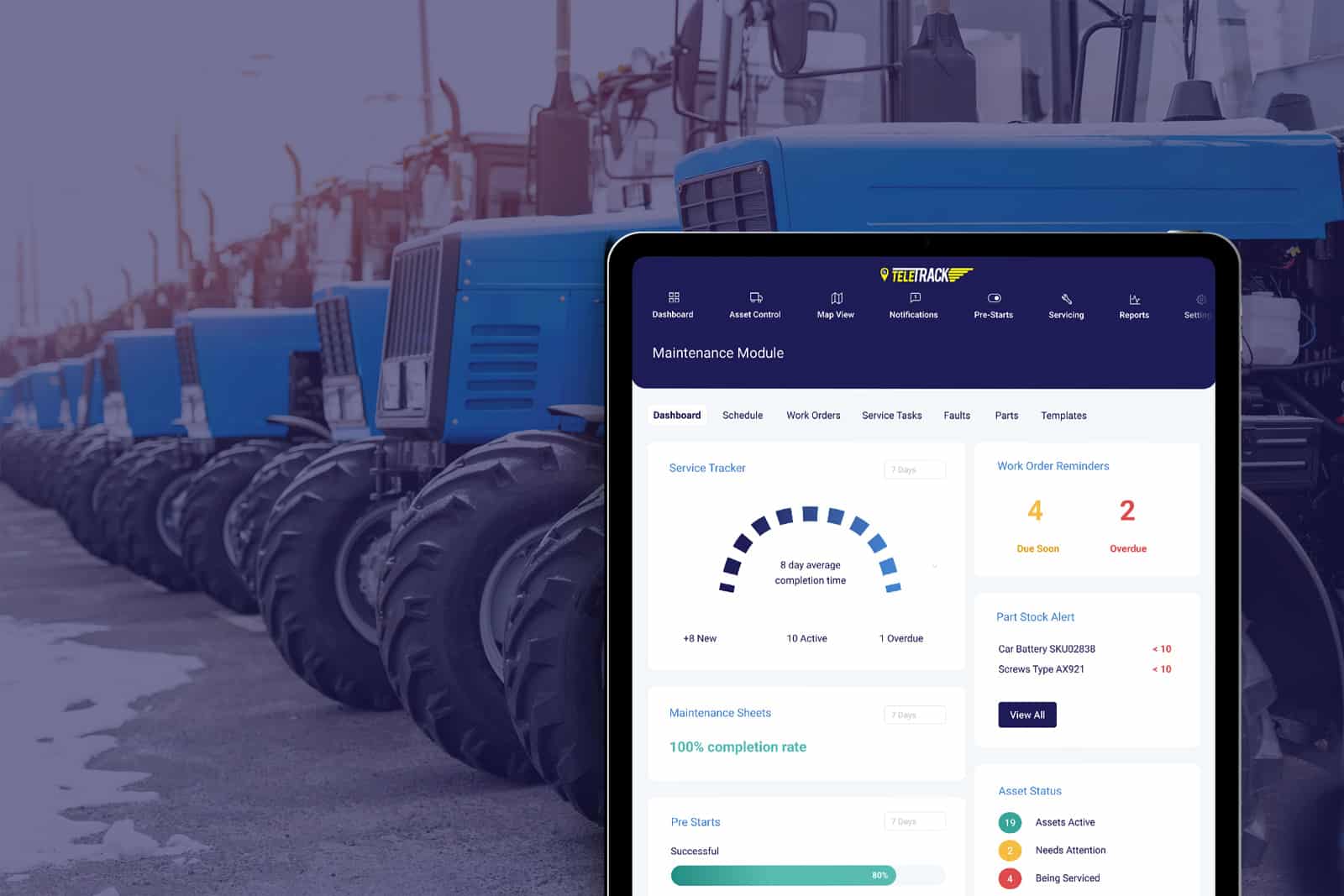Fleet telematics technology can help you quickly and easily optimise your fleet operations. By collecting data on vehicle performance and driver behaviour, telematics solutions such as ours can provide valuable insight that can be used to reduce costs, improve safety, and increase fleet productivity.
The Basics of Telematics and Fleet Management
Before you can start optimising your fleet operations with telematics solutions, it’s important to understand the basics of fleet management and telematics technology. Fleet management involves tracking and managing a fleet of assets—whether it’s cars, trucks, forklifts, excavators, cranes, access equipment, boats, or other types of assets—in order to maintain efficiency. Telematics is the technology that enables fleets to be remotely monitored and managed; this includes vehicle location data, as well as real-time performance metrics. You can learn more about the types of fleet intelligence insights Teletrack can provide for your assets here.
Monitor and Analyse Data for Improved Visibility and Efficiency
Once you’re using a telematics solution, you can start to monitor and analyse the data it captures. This includes real-time data on current vehicle location, past routes, performance metrics such as speed, idle times, and even asset maintenance.
Monitoring this data allows you to quickly identify inefficiencies in your fleet operations so that you can take steps to address them. You can also gain insights into how drivers are using their vehicles, which enables you to make more informed decisions about fleet management and maintenance.
Implement Automated Alerts for Pre-Starts, Faults, Maintenance, and Servicing
The Teletrack platform has automated alerts that can provide real-time data about your fleet operations and enable you to better manage them. With automated alerts, you can be notified when a vehicle moves out of its geo-fence perimeter, reaches its maintenance window, or is approaching its maximum allowed driving time. This helps you ensure that your vehicles remain compliant with regulations, are properly maintained, and are not overworked. Additionally, you can use automated alerts to keep track of driver scheduling so that you know when they’re on the road and when they’re available for deliveries or other tasks.

